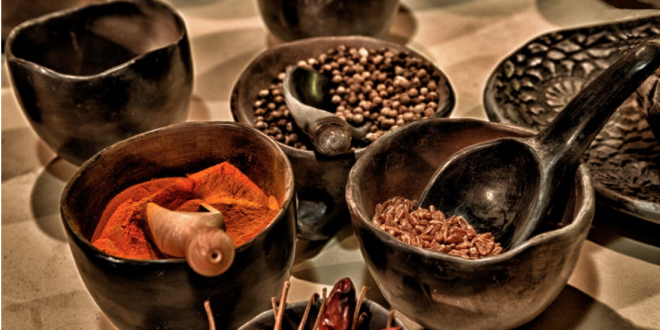By: Megan Tjandrasuwita
Originating in Southeast Asia, Indonesian and Vietnamese cuisines reflect their unique culture, long trading history, geography, and influences from other countries and regions such as China, India, the Middle East, Holland, and France. Each cuisine has its own distinct flavors, texture, consistency, and cooking techniques. While Indonesian dishes are rich, vibrant, and full of intense flavors and spices, Vietnamese food is famous for its light and subtle flavors, fresh ingredients, and healthy cooking techniques. Both Vietnamese and Indonesian cuisines have varying degrees of flavors, an extensive range of ingredients, and different cooking styles; however, the healthiness of Vietnamese cuisine makes it a better choice for any meal.
Although Indonesian cuisine is known for its rich, vibrant, and intense flavors, it is not the best choice for a healthy lunch or dinner. Each of Indonesia’s signature dishes such as rendang, spicy red curry beef, ayam goreng, yellow fried chicken, gado-gado, mixed salad and peanut sauce, satay, grilled marinated meat, is luscious, spicy, and full of bold herbal flavor. Savoring any of these delectable dishes can be an unforgettable culinary experience. However, spiciness and strong herbal flavor are acquired tastes and may not be tolerated by those who are not accustomed to ethnic cuisine. Furthermore, to create the strong and rich flavors, Indonesian cooking integrates coconut milk, sweet soy sauce, peanut, and a wide range of spices such as cloves, pepper, coriander, nutmeg, curries, and turmeric into their plates. The heavy coconut milk used to alleviate the spiciness and strong herbal flavor in most recipes contains a high level of saturated fat which will increase the production of cholesterol and thus can be harmful to human health. Also, since peanut is the key ingredient for making dipping sauce in many dishes such as chicken satay and gado-gado, tourists with nut allergy should avoid these dishes at all costs. Additionally, most of Indonesia’s richly-flavored dishes are oily and unhealthy due to the deep-fried cooking style. Research has shown that food, especially meat, prepared by deep-fried technique will increase cancer and cardiovascular disease risk. To most tourists, the negative health effects outweigh the rich, vibrant, intense, and complex flavor of Indonesian food.
Vietnamese cuisine, on the other hand, is light, nutritious, delectable, and invigorating due to its fresh ingredients and healthy culinary techniques. The light and freshly flavoring of Vietnamese cooking is shown through savory dishes such as pho, noodle soup, goi cuon, fresh roll packed with greens and meat or seafood, bun cha, and grilled pork noodle. Besides the subtle and aromatic flavors, mouth-watering dishes such as pho and goi cuon are not only delectable, but also provide essential nutrition and energy for our bodies. Due to influence of Buddhist values, Vietnamese food has a strong vegetarian tradition. A plate full of steamed vegetables or green lettuce is the centerpiece of every meal. Authentic Vietnamese cuisine combines fresh herbs including mint, lemongrass, chilies, cilantro, star anise, a star-shaped fruit, chives, basil, rice, and meat to create a savory and refreshing meal. These ingredients contain essential vitamins, carbohydrates, and minerals that are important for a healthy body. Unlike Indonesian dishes, Vietnamese dishes are mainly prepared with water or broth. This cooking method preserves the freshness of the ingredients and maximizes the natural taste of food in their dishes. By combining fresh and fragrant ingredients with healthy cooking techniques, Vietnamese cuisine is known as one of the healthiest in the world.
With a wide range of delectable and colorful dishes, both Indonesian and Vietnamese cuisines can please even the toughest critic. However, a health-conscious tourist should only indulge in the richly-flavored Indonesian food occasionally whereas the fresh and healthy Vietnamese dishes are a perfect choice for any meal.
 Tempus Magazine By Students, For Students
Tempus Magazine By Students, For Students 



